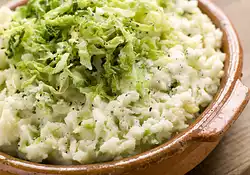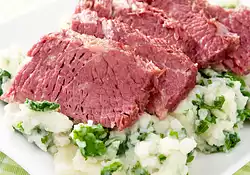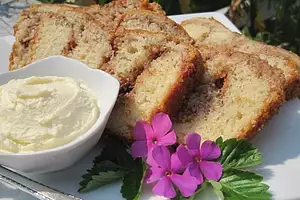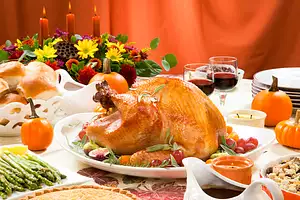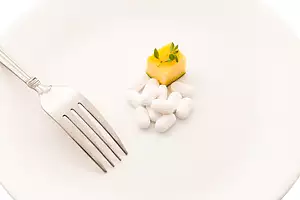Cabbage
About the ingredient cabbage. Including 685 recipes with cabbage, nutrition data, and where to find it.

Contents
What is cabbage?
Cabbage leaves often have a delicate, powdery, waxy coating called bloom. The occasionally sharp or bitter taste of cabbage is due to glucosinolate(s). Cabbages are also a good source of riboflavin.
Uses
The only part of the plant that is normally eaten is the leafy head; more precisely, the spherical cluster of immature leaves, excluding the partially unfolded outer leaves. Cabbage is used in a variety of dishes for its naturally spicy flavor. The so-called "cabbage head" is widely consumed raw, cooked, or preserved in a great variety of dishes. It is the principal ingredient in coleslaw.
Cooked
Cabbage is often added to soups or stews. Cabbage soup is popular in Central and eastern Europe, and cabbage is an ingredient in some kinds of borscht. Garbure is a thick soup of cabbage or other vegetables with bacon. Cabbage may be an ingredient in kugel, a baked pudding served as a side dish or dessert. Cabbage is also used in many popular dishes in India.
Nutrition
Nutrition Facts
Serving Size cup, chopped (89g)Where found
Cabbage is usually found in the produce section or aisle of the grocery store or supermarket.
Food group
Cabbage is a member of the Vegetables and Vegetable Products US Department of Agriculture nutritional food group.
How much does cabbage weigh?
| Amount | Weight |
|---|---|
| 1 cup, chopped | 89 grams |
| 1 cup, shredded | 70 grams |
| 1 head, large (about 7" dia) | 1248 grams |
| 1 leaf, large | 33 grams |
| 1 head, medium (about 5-3/4" dia) | 908 grams |
| 1 leaf, medium | 23 grams |
| 1 head, small (about 4-1/2" dia) | 714 grams |
| 1 leaf | 15 grams |
Related
Vegetables and Vegetable Products
| In Chinese: | 卷心菜 | |
| British (UK) term: | ||
| en français: | chou | |
| en español: | el repollo |
Recipes using cabbage
There are 685 recipes that contain this ingredient.

Homemade Noodles Snack
Tasty and yummy snack.This recipe for the kids or adults.

Cucumber Soup with Spring Vegetables
All veggies are young, fresh and full of spring garden aroma. Is there anything more lovely?

Momos
This is undoubtedly an innovative low calorie snack! flour wrappers are filled with a healthy filling of Soyabean and cabbage, and steamed to make an appetizing snack. Follow the exact procedure and make the world's best momos!

Manchow Soup
This is a Chinese-style soup popular in Indian Chinese cuisine due to its ease of preparation and hot spicy taste. The soup uses a spicies that adds lot of flavor to the soup.

Hot Dogs with Homemade Sauerkraut & Pickles
Classic hot dogs are served with homemade sauerkraut, pickles, yellow mustard and ketchup. An easy and delicious summer meal.
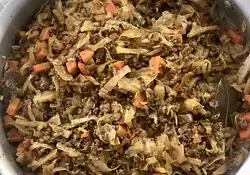
Cabbage & ground beef
A simple, tasty and heart-warming recipe for winter days.

Homemade Baked Noodles
Very tasty
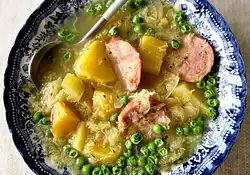
Cabbage & Kielbasa Soup
This hearty soup recipe combines the flavors of onions, celery, potatoes, kielbasa sausage, cabbage, green peas, thyme, and marjoram in a comforting stew. The ingredients are sautéed, simmered, and seasoned to perfection, creating a satisfying meal that's perfect for any day of the week.
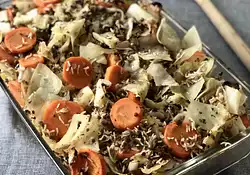
Cabbage Beef Casserole
Cabbage Beef Casserole, a dish that is not only satisfyingly subtly sweet but also a testament to frugality and the art of stretching one's dollar! Easy to make with simple ingredients and feeds a hungry family.

Chinese Idli
Traditional south indian idlis with a twist of chinese taste.This is a fusion of north and south Indian recipe. Serve as a snack or starter. Tastes delicious with schezuan sauce!
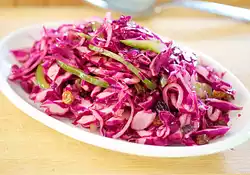
Favourite Pot Luck Sweet & Sour Slaw
A great little salad is perfect to be aside with grilled sausages.

Loaded Veggie Oat Burgers
Loaded Veggie Oat Burgers recipe

Homemade Appetizer
Tasty.
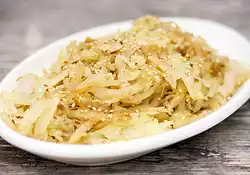
Aromatic Cabbage
This simple recipe actually turned out very tasty, which definitely amazed me, especially with only these a few ingredients. The cumin, fennel and sesame seeds gave the dish load of yumminess. A great summer side dish.

Cabbage & Shiitake Pot Sticky Buns
After a few potsticker recipes, I finally made my very first bunch of pot sticky buns (another popular food in China). They came out soft, and quite delicious. Nicely browned and crispy at the bottom. It's an excellent way to use up some of our fresh veggies.

Banda Kopir Tarkari (Vegetables Stir Fried with Spices)
In Bangladesh, cabbage is usually available in the market during the winter season, as are tomatoes, peas and carrots. So this dish appears quite frequently at Bengali dinner tables during the winter. In the markets where such vegetables are available year round, banda is a popular standard.
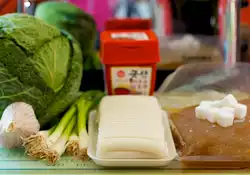
Korean Spicy Rice Cake, Cabbage & Leek Stew
This is another very normal dish that Korean people eat all the time, here the rice cake is nothing to do with dessert, it's a plain small patty or stick that is made of rice, normally simmered with stock, Korean chili sauce, cabbage and chilies. It soak all the delicious flavor, a classic and tasty Korean dish.
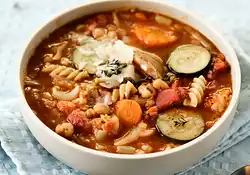
Sunday Italian Vegetable Soup
This hearty Italian vegetable soup delivers. It is chock full of vegetables, two kinds of beans, pasta, and tomatoes, everything needed for a relaxed Sunday meal.

Spring Cabbage with Bacon & Chorizo
for fans of spring cabbage and typical combinations..

Chipotle Coleslaw
Super quick, easy to make, and it's creamy and delicious with some nice crunch and freshness.
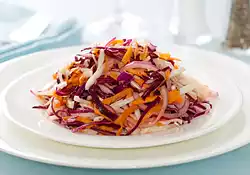
Crispy Cabbage Slaw
Very crispy like the name, celery seeds worked deliciously well in the coleslaw, and it tasted very refreshing with a bit sweetness and sourness. A great side dish with many main courses.

Cabbage, Carrot, & Green Pepper Kimchi
Cabbage, Carrot, and Green Pepper Kimchi recipe
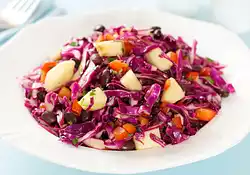
Black Bean Slaw with Soy Ginger Dressing
A delicious saw, love the idea of adding black bean into this crunchy and tasty slaw. The soy-ginger dressing goes deliciously well with all the veggies. A great side dish to be aside with summer BBQ.
